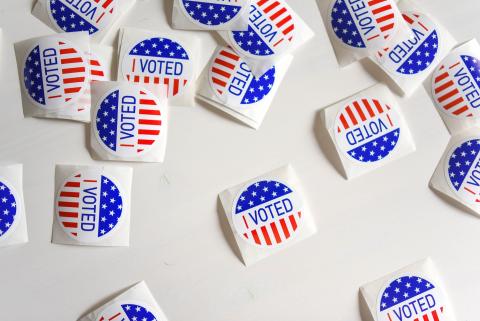Photo Credit: Element5 Digital / Unsplash
Montana may be on the verge of joining a growing movement across the country to give voters a fairer elections process that offers more choice and greater accountability.
Montanans for Election Reform is currency in the process of collecting signatures for two ballot initiatives – Constitutional Initiative 126 (CI 126) and Constitutional Initiative 127 (CI 127).
CI 126 would require the state to use a nonpartisan top four primary system, modeled after the reform that passed in Alaska in November 2020. All candidates and voters, regardless of party, participate on a single ballot. The top four vote-getters move on to the general election.
“No more being forced to choose one party’s ballot or the other – every voter gets all of the same choices,” write Bruce Tutvedt and Ted Kronebusch of Montanans for Election Reform.
“The top four vote-getters would then advance to the general election, regardless of their party affiliation, giving more voters an opportunity to hear from more candidates throughout an entire election”
Tutvedt, a former Republican state senator, is chair of Montanans for Election Reform. Kronebusch is a small business owner and a former executive committee member of the Montana Republican Central Committee.
CI 127 would change the Montana Constitution to require general elections in most elections in the state to be decided by a majority. Currently, Montana is a plurality state, which means a candidate can win an election with less than 50% of the vote.
“[The initiative] stops candidates from sneaking through without gaining the support of the majority of voters in their district,” write Tutvedt and Kronebusch. They added that together the two initiatives “will better align our election systems with the will of” voters.
Montana is part of a growing number of states where voters are clamoring for nonpartisan primaries that advance the top 4 or 5 candidates to the general election. Nevada voters could adopt a Top 5 system in November.
Idaho voters could vote on a similar Top 4 system as well.
The initiatives in Nevada and Idaho follow a similar model adopted in Alaska, which uses ranked choice voting (RCV) in the general election to not only give voters the option to rank candidates in order of preference, but also determine a majority winner in elections.
Recent polls in Chula Vista and San Diego, California, show that two-thirds of voters would support a nonpartisan primary system that advances more than two candidates and uses an alternative voting method like RCV to determine a winner.
It doesn’t matter if it is a “red state,” “blue state,” or “purple state,” voters agree that the current system isn’t working for them and they want a better way to elect public officials.
CI 127 leaves it open for the Montana Legislature to decide how majority outcomes in elections would be ensured. The subject of the initiative states:
“Amends the Montana Constitution to provide that elections for certain offices must be decided by majority vote as determined as provided by law rather than by a plurality or the largest amount of the votes. If it cannot be determined who received a majority of votes because two or more candidates are tied, then the winner of the election will be determined as provided by law.”
RCV may be off the table. Montana lawmakers passed a law in 2023 that prohibited the use of the voting method statewide. A fifth of US states have passed RCV bans since 2022 in an attempt to counter the tremendous momentum behind the reform.
The odds of the same Montana Legislature changing its mind on RCV are slim, but there are other alternative voting methods that could be used to ensure majority winners and that voters can cast a ballot for their true preferences.
“We trust Montana voters to think for themselves. Montanans want to be able to vote for the person, not just the party. And we deserve more and better choices on the ballot in November,” write Tutvedt and Kronebusch.
Montanans for Election Reform need 60,359 valid signatures for each initiative to get them on the November ballot. The group has until June 21 to submit the signatures to county clerks.
